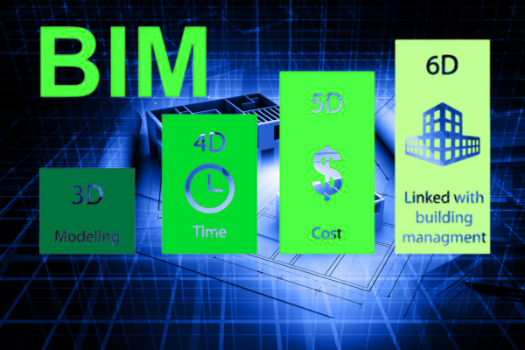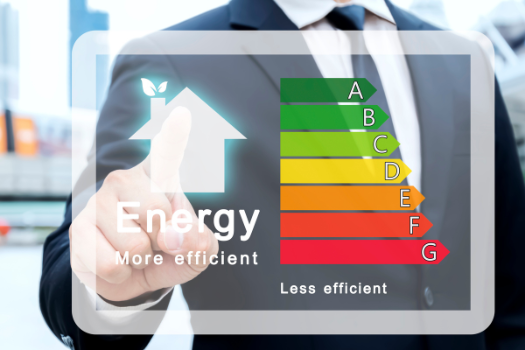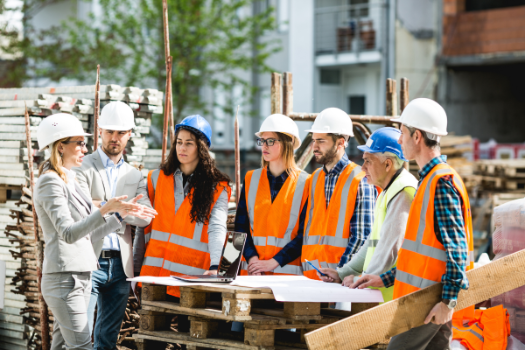.png)
Unlocking the Potential of 6D BIM for Building Optimization
Introduction
The construction industry is changing fast. Building Information Modeling (BIM) has become a game-changer for project planning and management. It allows teams to collaborate better and make smarter decisions. One of the most exciting dimensions of BIM is 6D BIM. It goes beyond traditional models by adding sustainability and facility management data.
6D BIM focuses on a building’s entire lifecycle. It provides insights that help reduce energy use, improve maintenance, and create more sustainable designs. This approach ensures that buildings are efficient and environmentally friendly from the start.
In this article, we’ll dive into the potential of 6D BIM. You’ll learn how it boosts building optimization by improving energy efficiency, supporting sustainability goals, and streamlining lifecycle management. Whether you're a designer, builder, or facility manager, 6D BIM offers tools to meet today’s construction challenges. Let's unlock its full potential together.
Understanding 6D BIM
6D BIM builds on traditional 3D models by adding layers of valuable information. While 3D BIM focuses on the physical design of a building, 4D BIM adds time and scheduling data, and 5D BIM incorporates cost analysis. 6D BIM takes it further by integrating sustainability and facility management data.

This added dimension allows stakeholders to understand how a building will perform throughout its lifecycle. For instance, they can analyze energy usage, maintenance needs, and environmental impact right from the design phase. These insights enable smarter decisions that improve efficiency and sustainability.
One of the most important aspects of 6D BIM is how it connects all stages of a building’s life. From initial design to construction, operation, and eventual renovation or demolition, 6D BIM ensures that every detail is tracked and optimized. By simulating performance early on, architects and engineers can identify potential inefficiencies and make changes before construction begins. This helps lower operational costs, reduce environmental impact, and create buildings that meet modern standards for sustainability.
6D BIM is more than just a tool—it’s a comprehensive approach to smarter, greener, and more efficient building management, making it an essential part of today’s construction industry.
Benefits of 6D BIM in Building Optimization
6D BIM offers several powerful benefits for optimizing buildings. It goes beyond traditional modeling by focusing on sustainability, energy efficiency, and long-term building management.
Energy-Efficient Building Design
One of the most significant advantages of 6D BIM is its ability to simulate energy consumption during the design phase. Architects and engineers can analyze how a building will use energy and make changes before construction begins. This helps them design systems that save energy and reduce costs. By optimizing energy efficiency, buildings become less expensive to operate and leave a smaller carbon footprint.

Lifecycle Management in Construction
6D BIM also shines in managing a building’s lifecycle. It provides detailed information about the lifespan of components, from structural materials to HVAC systems. With this data, teams can plan proactive maintenance and upgrades, ensuring the building stays efficient and functional. This approach reduces costly repairs and extends the building's longevity while keeping it at peak performance.
Facility Management with BIM
Another critical benefit is its support for facility management. 6D BIM integrates data about building systems and maintenance schedules into a single platform. Facility managers can quickly access information to keep everything running smoothly. This centralization minimizes downtime, improves operational efficiency, and simplifies maintenance planning.
By combining these benefits, 6D BIM helps create buildings that are smarter, greener, and easier to manage for years to come. It’s a step forward in modern construction and sustainability.
Implementing 6D BIM for Sustainable Construction
Adopting 6D BIM is a significant step toward achieving sustainable construction goals. This dimension of BIM incorporates sustainability metrics directly into the model, providing a clear view of a building’s energy performance and environmental impact. By analyzing this data, teams can make informed decisions to design and build more sustainable structures.

One of the key features of 6D BIM is its ability to evaluate energy usage during the early design stages. This allows architects and engineers to implement systems that reduce energy consumption and optimize efficiency. For example, they can select high-performance insulation, energy-efficient HVAC systems, or renewable energy sources like solar panels.
The process also includes choosing sustainable materials. With 6D BIM, designers can assess materials for durability, environmental impact, and recyclability. This supports the use of resources that align with climate-neutral construction goals.
Additionally, 6D BIM supports the long-term vision of sustainability by factoring in the entire lifecycle of the building. It helps plan for upgrades, retrofits, and maintenance, ensuring the building continues to meet energy and environmental standards over time.
By integrating sustainability at every stage, 6D BIM enables the creation of greener, smarter buildings that contribute to a healthier planet. It’s a practical solution for a more sustainable future in construction.
Challenges and Considerations
While 6D BIM offers great potential, implementing it comes with challenges that must be addressed. One major hurdle is the need for specialized training. Teams must learn how to use 6D BIM tools effectively, which requires time and resources. Without proper training, it’s hard to unlock the full benefits of the technology.

Another challenge is the potential for higher initial costs. Implementing 6D BIM often involves investing in advanced technology, updated hardware, and expert consultants. These upfront expenses may deter some companies, even though the long-term savings often outweigh the costs.
Ensuring interoperability between platforms is another key consideration. Construction projects often involve multiple stakeholders using different tools. If these systems don’t work well together, it can slow progress and create inefficiencies.
By addressing these challenges through strategic planning, training, and investment, organizations can fully realize the benefits of 6D BIM and drive building optimization forward.